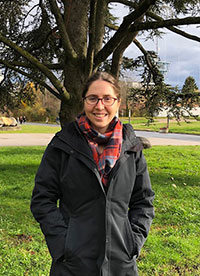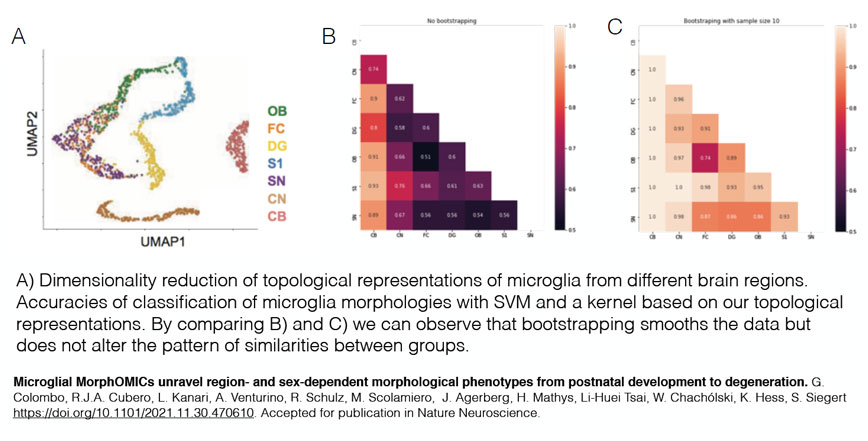Martina Scolamiero new assistant professor in mathematics
NEW DIGITALISATION RESEARCHERS
In 2019 Martina Scolamiero was appointed assistant professor in mathematics with specialisation in geometry and mathematical statistics in artificial intelligence at the Department of Mathematics/SCI school. Her focus is topology, the mathematical theory of proximity and connectivity, to extract geometric patterns in data, highlight interesting sub-groups or discover complex correlation patterns.
What is your research area?

"My research is in Topological Data Analysis (TDA). We use topology, the mathematical theory of proximity and connectivity, to extract geometric patterns in data, highlight interesting sub-groups or discover complex correlation patterns. In the last decade there has been a strong theoretical development of the field together with an explosion of applications in several fields ranging from natural science to material sciences and sensor networks. From the applied perspective, I am particular interested in applications to neuroscience and psychiatry," Martina Scolamiero says.
What are the large research challenges in your research area and why?
"Topological Data Analysis is not only about applying known topological methods to gain insight from data, but also discovering new techniques and addressing computational challenges. From a theoretical perspective I am interested in defining and understanding distances between our data representations. The aim is to understand properties of one dataset by comparing it to others.
An important challenge for TDA, in my opinion relies in the rapidly growing trend of integrating TDA with Statistics and Machine Learning. Topology is revealing meaningful insight in data, with statistics and machine learning we will be able to summarise and quantify how reliable and robust this information is."
If you are looking for research collaborators, what competence is important?
"My field of research is highly interdisciplinary. I have had the opportunity to work with physicists, biologists, computer scientists and mathematicians. When working with colleagues with complementary competences to mine, an open dialogue and patience was important, since it allowed to learn from each other."
Tell us more about one of your research results and why you picked it?
"One theme, on which I have been working on for several years, together with the TDA group at KTH, is building feature maps for data which are robust with respect to small perturbations of the data. The method we use is very abstract but the result is practical and it can be used for example for classification tasks with a SVM classifier. In collaboration with S.Siegert’s group IST Austria, Lida Kanari, Blue Brain Project and Kathryn Hess EPFL, we were able to use such method to study the shape of microglia cells. In particular we could extract signatures which distinguish microglia from different brain regions. Our features maps were used to understand the basic topological information needed to distinguish classes and the effect of a bootstrap procedure needed to homogenise large and heterogeneous groups of microglia."

Lastly, what do you like with Sweden, Stockholm, and KTH?
"I think KTH is a fantastic environment to pursue research. I am part of the WASP initiative and Digital Futures. This is giving me both the space to grow as an individual researcher and also feel part of a large community where I can share my thoughts. I also particularly like the Swedish culture of respect and trust. Stockholm is a great place to live with my family."
